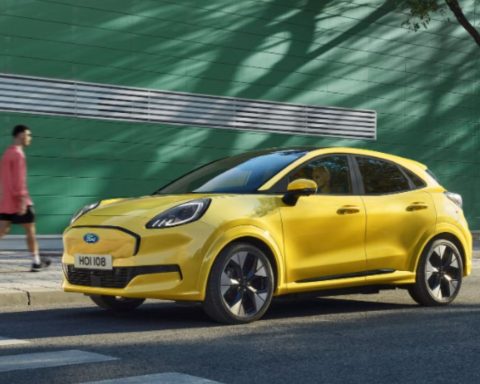While electric cars enjoy the enthusiastic embrace of policy-makers and the public, their diminutive cousin the e-scooter hasn’t been taken nearly as seriously. E-scooter use has taken off quickly where it’s been allowed, with growth rates exceeding even ride-hailing in its early and highly hyped days. But e-scooters are also the subject of ongoing and sometimes intense debate at city halls and have received a decidedly mixed reception in Canada.
Ontario cities such as Hamilton and London remain on the fence, while e-scooters have already become ubiquitous in Calgary and Edmonton. In Vancouver, the door has been opened somewhat more tentatively, with privately owned e-scooters just approved for use on a pilot basis. Toronto, however, recently landed on a seemingly hard “no.”
When concerns were aired this spring at Toronto City Hall, the city cited “a lack of protections for pedestrians” and the particularly pressing need during the COVID era to “prevent potentially serious injuries on Toronto streets and sidewalks.” These are, of course, entirely valid concerns to raise. But they call for careful and balanced consideration, given the compelling decongestion and decarbonization benefits e-scooters offer.
Assessing the safety impacts of e-scooters
Safety data specific to e-scooters is gradually accumulating and variable conclusions have been reached, but some assessments suggest that the rates for emergency department visits and fatalities are similar to those for bicycles.
A 2020 report by the International Transport Forum concluded, “A trip by car or by motorcycle in a dense urban area is much more likely to result in the death of a road user – this includes pedestrians – than a trip using a micro-vehicle.” With advancing technological safeguards (such as the uploading of “helmet selfies” before starting a ride), rigorous user education, and carefully thought-out regulation and enforcement around where and at what speed e-scooters can operate (and park), the safety picture is also likely to improve materially.
Concerns have also centred on where e-scooters go when not in use. Haphazard parking – which is both unsightly and a particular risk for seniors and the disabled – was a major problem in many European cities as fleet operators rushed to market. But in Canada, in contrast, operators have typically collaborated with cities and implemented common-sense solutions such as vehicle docks and corrals.
Less congestion, less carbon
The reality is we need a range of e-vehicles and other low-impact transportation options if we are to have any hope of meeting key urban-planning and climate objectives. Vancouver, for example, has set targets for half of all kilometres driven to be in zero-emission vehicles (ZEVs) by 2030. To get there we’ll need a lot of those kilometres to be on e-scooters. They’re an inclusive option for people who can’t or don’t want to use active transportation such as cycling and who can’t afford a heavier-weight ZEV. And while they don’t work for all trips, the car displacement effect is real.
One-for-one replacement of full-size gas vehicles with ones powered by electricity will do nothing to alleviate road congestion or to free up more of the real estate occupied by parking. Meanwhile, in a report released last month, the City of Kelowna estimated that 40% of e-scooter trips replaced driving and projected 274,000 kilometres of avoided vehicle travel annually.
Micro-mobility is also an excellent solution to the first-and-last-mile challenge, effectively bridging distances that otherwise block access to public transit. And micro-mobility is in a league nearly all of its own on energy use and emissions. A 2020 EY study, focusing on a European fleet of shared e-scooters, quantified their full life-cycle greenhouse gas emissions at 35 grams of carbon dioxide equivalency per person per kilometre, compared to 50 to 60 for a train, up to 300 for an electric car, and up to 350 for a gas-fuelled car. And their energy efficiency is an important consideration even as fossil fuels fade away, since ongoing electric car adoption has the potential to stretch the capacity constraints of our electricity grids.
Research is uncovering additional knock-on benefits. This includes an uptick in local impulse buys of such things such as food and drink in areas served by e-scooter fleets – an outcome no doubt particularly welcomed by many small businesses in this challenging late-pandemic period.
To fully capture all these benefits, we need the right combination of sound operating practices for shared fleets and smart and effective regulation. Municipalities need to continue to develop and re-allocate lanes and other transportation infrastructure to safely accommodate the full range of ZEV vehicles – recognizing that users will gravitate to where they feel safest. Cities and transit authorities in turn can benefit from the data that can be generated automatically by e-scooter fleet users, and which can be used to identify both transit service gaps and potential pinch points where there’s a high risk of conflict between different transportation modes.
Today, most Canadians see scooters as a youthful indulgence, an occasional lark or a hipster trend. But what they really are – or certainly have the potential to become – is an essential component of a more diversified and sustainable urban transportation ecosystem. Policy-makers need to help make that happen, with equal enthusiasm for ZEVs big and small.
E-scooters: Who’s using them and how?
Users of shared micro-mobility services skew young (McKinsey says about half are younger than 34, with relatively few above 55) and male (in the range of 66% to 81% of all users).
Aggregated statistics suggest that 30% to 40% of e-scooter trips replace a car trip.
The National Association of City Transportation Officials in the U.S. puts the average trip at 12 minutes and 1.6 kilometres and says e-scooter ridership grew from 38.5 million trips in 2018 to 88.5 million in 2019.
Sandra Phillips is founder and CEO of movmi, a Vancouver-based shared mobility consulting firm.







